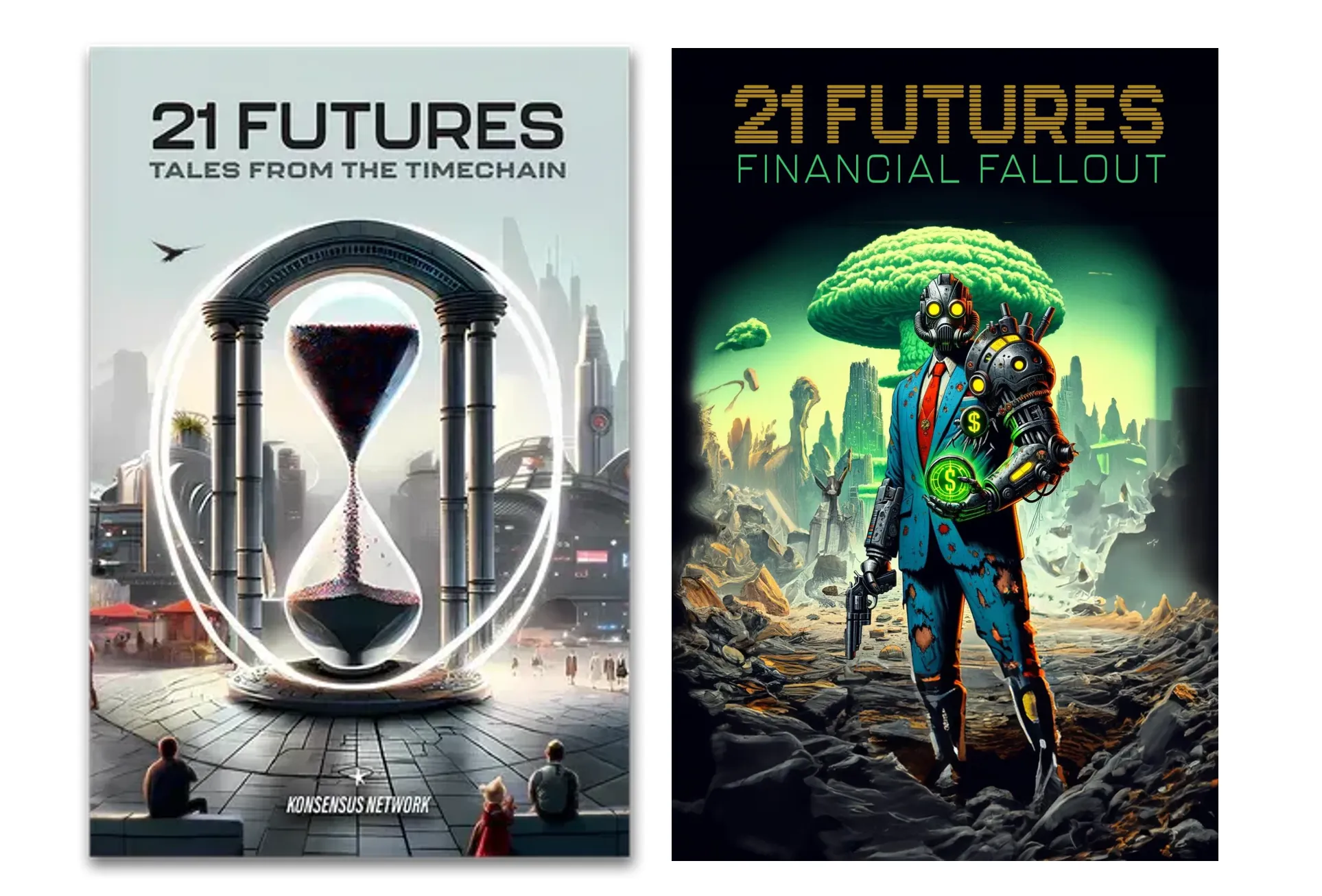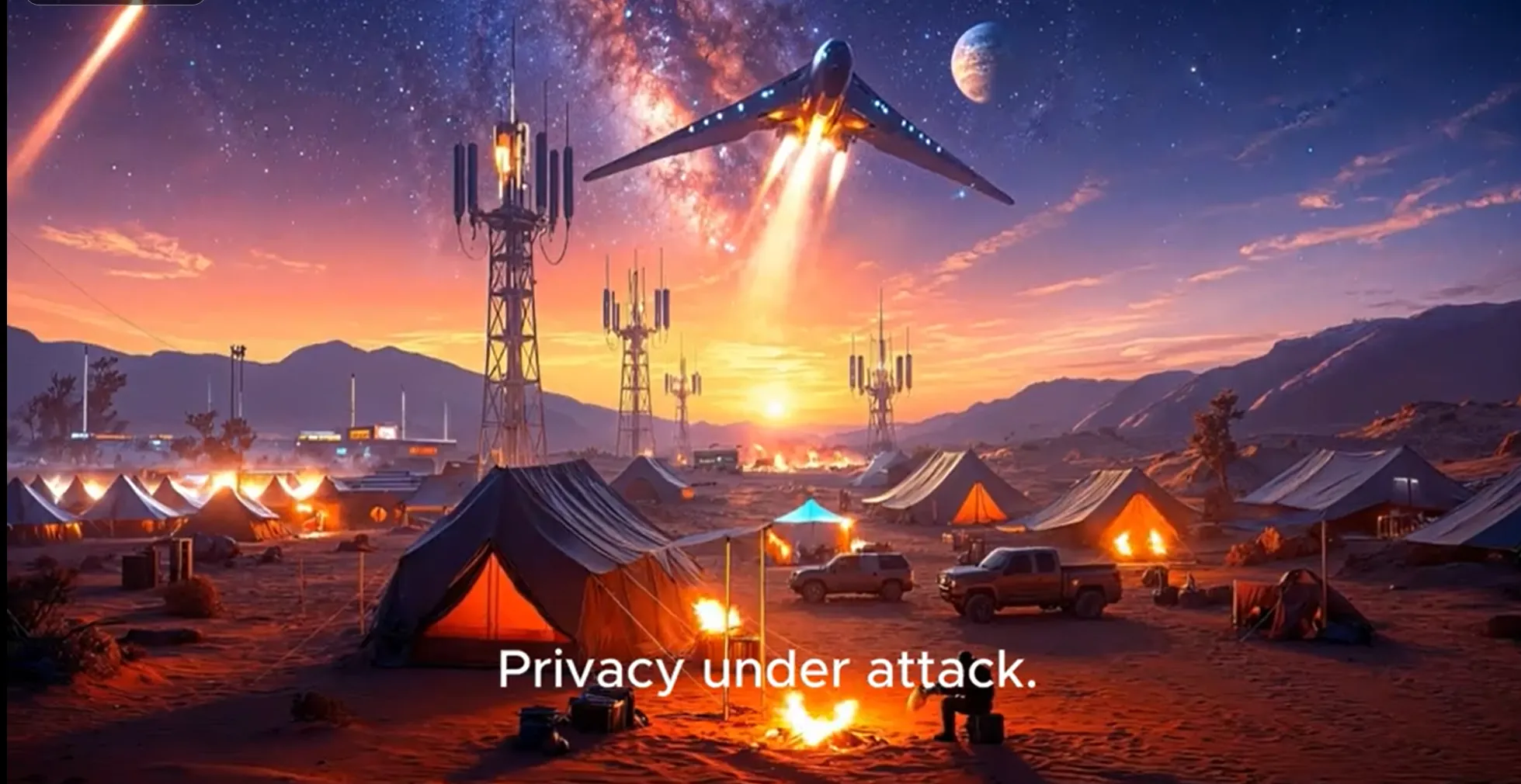Philip Charter brings Bitcoin to life through fiction
His 21 Futures anthologies transform abstract ideas into powerful, character-driven stories about freedom and technology

Philip Charter isn’t trying to convert anyone to Bitcoin. He’s just telling stories about miners in space, rebels in dystopias, and ordinary people confronting extraordinary systems.
Through 21 Futures, his anthology series, Charter is testing whether fiction might just be the most powerful way to understand emerging technologies.
“We don't want the story to be about Bitcoin,” he told Guardians of Bitcoin. “First and foremost comes the story, with characters facing great peril and problems they overcome.”
The short story collections use Bitcoin as a subtle backdrop, creating narratives that anyone can enjoy, regardless of their technological prowess. “There’s a massive difference between technical Bitcoiners who say ‘study Bitcoin’ and most people who think it’s too difficult to understand monetary theory or technology,” said Charter.
Each anthology explores “what if” scenarios that spark curiosity about potential futures – from space mining to communication breakdowns in far-off worlds.
From decentralization to storytelling
The anthologies are published by Konsensus Network, a decentralized publishing house that operates differently from traditional publishers. “We’re a starfish organization,” Charter said, meaning the company grows organically with freelance professionals collaborating on projects. This structure allows for faster, more agile content creation. “It can take three years to publish a book through traditional channels,” he said. “In a space like technology, that’s a lifetime.”
Charter’s criticism of the legacy publishing world is sharp. “Publishers, the only way for them to make ends meet is to buy other publishers and fire everyone and then say, ‘Oh, hey, we’ve got fewer employees,’ and squeeze the life out of authors’ pay,” he said. By contrast, Konsensus Network empowers creators through flexible collaboration – echoing Bitcoin’s decentralized ethos.
What makes these stories different
What sets 21 Futures apart is its refusal to become propaganda. “We received many submissions, but we didn’t want stories that just said ‘Bitcoin solved everything,’” Charter said. “If you send in a story about ‘and then he revealed his mask, and it was Satoshi Nakamoto,’ well, we’ve got 100 of those stories, so we’re not going to publish yours.”
The result is a mix of science fiction, dystopia, and optimism. Some stories serve as warnings about centralization; others celebrate innovation and freedom. “Quite a few of them had endings where characters had unlocked some new skill or capability to fight back against this dystopian system they were in,” he said. “That’s a typical structure for a dystopian short story – at the end, there’s some kind of hope that it’s not all darkness.”
Each anthology contains exactly 21 stories – a nod to Bitcoin’s 21-million supply cap. The number, Charter said, “just fit perfectly.” It’s now part of the brand’s identity, from the story count to the name itself.

The 21 Futures anthologies connect imaginative storytelling with Bitcoin’s real-world ethos of freedom and innovation. Photo: twentyonefutures.com
A growing network of writers
The project attracts a diverse range of writers – from complete newcomers to established names. “In the first book, we had a good variety of writers who were completely new to fiction and some who were pretty well known in the Bitcoin space,” Charter said. The second anthology includes authors recognized in other more-established genres like science fiction as well as recurring contributors from the first book.
“We had a story from Knut Svanholm, from Niko Laamanen, from Ioni Appleberg,” he added. “In the second book, we have more career writers – authors who are known in the sci-fi and fantasy space.”
Some writers even return to the same fictional universes in new installments. “One writer from Brazil wrote one story for our first anthology and then a follow-up story for our second,” Charter said. “I would definitely like to see more shorts set in the same universe.”
Bringing Bitcoin fiction to life
Future plans for 21 Futures extend beyond books. Charter hopes to adapt some stories into short films, animations, and an audiobook. “We’ve always seen Love, Death & Robots, the Netflix anthology series, as having some synergy with our concept,” he said.
He pitched a short film project at the Bitcoin Film Festival in Warsaw, aiming to fund one short from the first book, Tales from the Timechain, as the first step toward something bigger.

Plans are in motion to bring 21 Futures stories from the page to the screen through films and animations. Photo: twentyonefutures.com
Balancing AI and human creativity
While 21 Futures champions human storytelling, it doesn’t ignore new tools. Charter describes himself as a “totally human writer,” but acknowledges the utility of AI. “I use it for research or generating ideas,” he said. “It’s not something that can ever replace human creativity.”
He’s equally particular about imagery. “Every crypto news website has an animal like a bull with bright backgrounds and massive shiny Bitcoins flying everywhere,” he said. “People don’t pay attention to white noise. They pay attention to difference.”
For 21 Futures, the team uses AI-generated images only as a base layer. “We spend a lot of time prompting to get a good starter image,” Charter said. “We have designers who then change those images and work on them to make them better.”
The goal, he emphasized, is to create visuals that enhance stories, not distract from them.
Making technology human again
“Everybody loves stories,” Charter said simply. By creating narratives that are engaging first and educational second, 21 Futures aims to spark curiosity about Bitcoin and its potential societal impacts. For readers intimidated by technical explanations, the anthologies offer a way in – a bridge from imagination to understanding.
“If you prefer stories about fighting the powers that be, like 1984, over technical whitepapers, that’s okay,” he said. “Read what you want.”
As for what’s next, Charter takes the long view. “I’m hoping, of course, that in 10 years, when 50% of the world is using Bitcoin on a daily basis, they’ll say, ‘Hey, did you know the world’s first Bitcoin fiction anthology was published in 2023?’”
It’s a fitting sentiment for a project built on low time preference and creativity – one that treats storytelling as both art and outreach.
Readers curious about the project can visit twentyonefutures.com to explore the anthologies, read about upcoming projects, and discover how fiction can make the future – and Bitcoin – easier to imagine.



